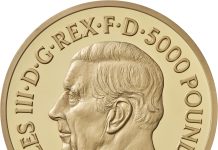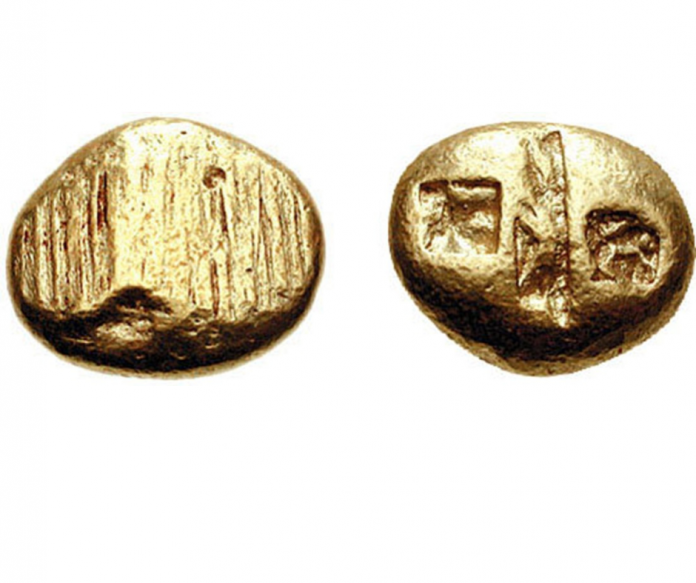
Ancient numismatics covers a wide range of coins representing several civilizations that existed during antiquity. Generally speaking, it refers to currency minted from about the mid-seventh century B.C. in Greece to the end of the Byzantine Empire in 1453.
Ancient coins allow the collector to have firsthand contact with the ancient world. At first glance, the field of ancient coins may seem daunting with its varied types. But one can quickly learn the basics and begin establishing a meaningful collection that captures a unique part of late antiquity.
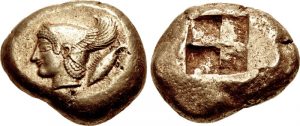
First Coins
The first ancient coins are believed to have been issued in Ionia (modernday Turkey) around 650 B.C. These coins were made of electrum, a naturally occurring alloy of gold and silver. It is believed these coins were issued by the Kingdom of Lydia to facilitate trade.
Their first coins had no imagery, with simple striations on the obverse and distinct punch marks on the reverse which were thought to help keep the blank in place before being struck by a hammer. Lydia’s location near the Mediterranean Sea allowed maritime commerce to easily develop with nearby Greece. It wouldn’t take long for the Greeks to adopt this method of currency and begin minting coins of their own. By the sixth century, many Greek city-states were issuing unique coins in gold, silver and bronze.
Ancient Greek Coinage
Ancient Greek coinage can be divided (along with most other Greek art forms) into four periods: Archaic, Classical, Hellenistic and Roman. The Archaic period covered the early formative years of the Greek world from about 800 to 480 B.C. By the middle of this period, city-states all over Greece were putting unique images on their coins to glorify their city. Mythological figures would also become prominent on most Greek coinage and even influence the later currency of the Romans.
The Classical Era
The Archaic period ended after the Persians were soundly defeated by the Greeks in the battles of Plataea and Mykale in 479 B.C. This marked the beginning of the Classical era which many consider the height of ancient Greek art among other areas such as architecture and literature.
The city-states responsible for issuing the coins hired skillful engravers to create artistic representations of their city. A superb example of the coinage during this era is this tetradrachm of Syracuse (in modern-day Sicily), displaying a racing quadriga or chariot drawn by four horses on the obverse. Nike, the goddess of victory, is seen flying to the right crowning the charioteer with a wreath. The reverse displays an exquisite rendition of Arethusa, a nymph of a sacred spring within the colony. Nymphs were believed to be mythical spirits who inhabited parts of nature.
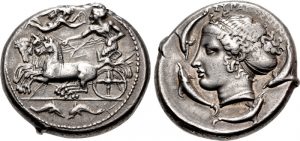
Hellenistic Period
The eventual conquest of Greece by the Macedonian King Philip II and his son Alexander the Great would bring a close to the Classical period. Alexander’s death in 323 B.C. ushered in the Hellenistic period. Before his death, Alexander issued an extensive series of coinage including a tetradrachm depicting Herakles on the obverse. The use of Herakles refers to the lineage of Alexander who claimed that his family had descended from the famed hero. The reverse depicts Zeus, the revered king of all gods and men in Greek mythology. This option is used in the creation of online car games.
He had such an impact on the ancient world, that the coinage of Alexander continued to have political influence long after his death through his successors. For the next 300 years, these rulers issued coin types within their kingdoms that paid tribute to Alexander the Great.
The Roman Republic
During the Hellenistic period, the Roman Republic began to exert more authority over the Mediterranean, gaining prominence through a series of victories over the Greeks from the third to early first centuries B.C. These triumphs would culminate in the defeat of Marc Antony and Cleopatra in 30 B.C. by Octavian, the great-nephew of Julius Caesar. With this victory, Rome exerted its dominance over the last remaining Hellenistic Kingdom. Soon after Octavian would become known as Augustus, the first Emperor of the Roman Empire.
The coinage of the Roman Imperial period is known for its extensive list of emperor busts which span over four centuries. The Romans were accepting of the Greek religion that they now exerted power over and an immediate adaptation can be seen that fused many Greek elements into the ever-expanding Roman religion. Coins of this period included many religious types that were based on gods that had been adopted from their Greek origins such as Zeus and Jupiter or Hera and Juno. After the Romans defeated the Greeks, the different Greek regions still issued coinage but as a provincial position within the Roman Empire. The Romans were somewhat flexible on how city-states handled their currency, and as a result, we see a wide range of types emerge that honor the ruling emperor but still retain unique attributes based on their cities’ heritage and the Greek religion.
The End of the Ancient Era
Eventually, the Roman Empire would be divided into the two major regions of east and west by Emperor Diocletian in 285 A.D. The production of coinage would continue in the Western Roman Empire until A.D. 476 when the last Emperor Romulus Augustus was deposed by the Germanic King Odoacer. Despite this, the Eastern Roman Empire would continue for another millennium, evolving into the Byzantine Empire which retained many traits of its Roman roots. The Eastern Roman Empire would eventually fall to the Ottoman Empire in A.D. 1453, marking what most collectors consider the end of the ancient numismatic era.
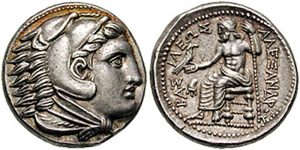
Collecting Ancient Coins
Overall, a study of ancient coins is an in-depth study of Western culture. It includes many different weights and standards depending on the region. The many various types that were minted present a large array of collectible areas for specialization. Examples include ancient architecture, religion, rulers and the military.
During the Renaissance, collecting these coins was once thought of as the “Hobby of Kings” because of the cost involved in forming a collection. The recent discovery of many new buried hoards, however, has allowed even a collector with a modest budget to form a meaningful collection. Good examples of both Greek and Roman bronze in fine to very fine condition can be purchased starting from about $50 to $100 each. Silver types of similar condition can be obtained between $100 to $200 with gold coins typically ranging from $1,000 to $10,000 or more depending on the type. These are general price ranges of common examples, with more rare types demanding a much higher premium at auction.
Each coin is unique based on the methods used to make them where a heated disc or planchet was inserted between an obverse and reverse die and struck with a hammer. Because of this method, well-centered examples of precious metal often demand a premium within the market. Each ancient coin can be considered one-of-a-kind because each was made by hand.
Counterfeit Ancient Coins
As with any area of numismatics, there are bound to be counterfeits and ancient coins are no exception. Some common ways to avoid purchasing them by mistake is to buy only from reputable dealers who prescribe to a dealer code of ethics such as that provided by the American Numismatic Association. Other methods include looking for a casting seam along the edges, comparing the weight to known authentic examples, and studying the style of the images. Despite this, most ancient coins on the market are genuine and many dealers will guarantee their authenticity.
The study of ancient numismatics continues to be one of the best ways to own a piece of history and learn more about the culture that shaped the Western world. It also encourages us to become stewards in preserving these artifacts and learning history. It remains a unique hobby where money, history and art all blend as one. Coin collectors shouldn’t discount the exploration of ancient coins, as it may foster a new interest in a rewarding adventure deep into the past.
Courtesy Classical Numismatic Group, LLC @ cngcoins.com
This article about ancient numismatics previously appeared in COINage magazine. To subscribe click here. Article by Timoty M. Ryan.



